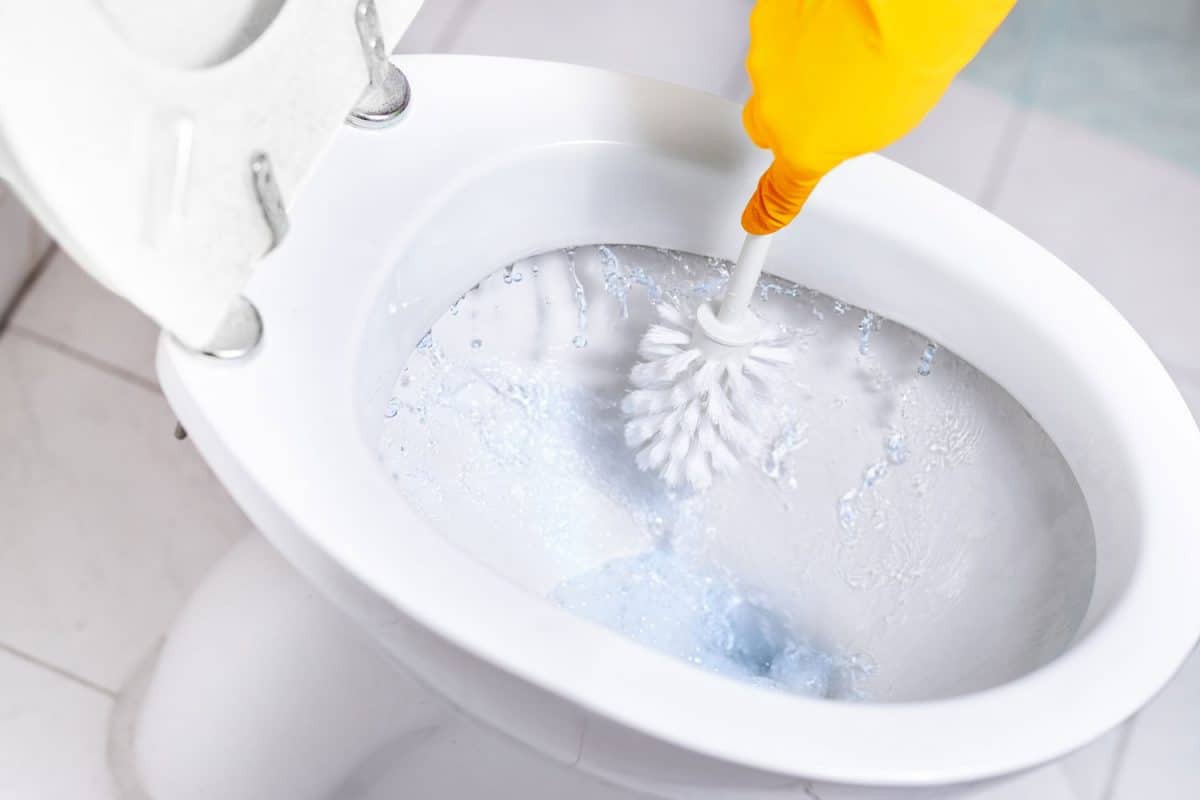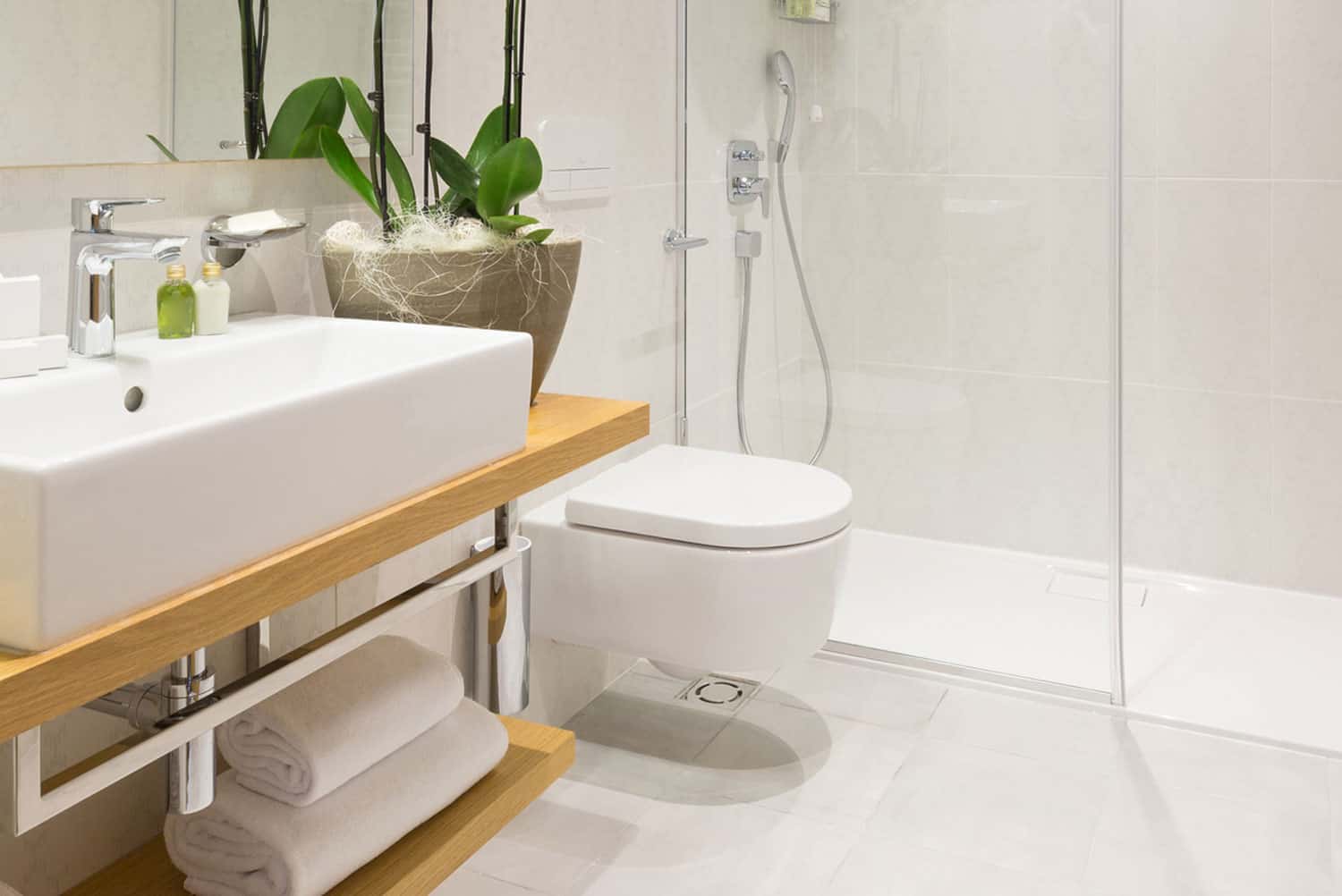Toilet cleaning is not the most enjoyable cleaning task to do in a home. However, it is necessary to keep a sanitary bathroom environment. But how do you clean the siphons inside the toilet? We've researched this answer for you, and in this post, we will discuss it in detail.
Here are the steps to clean your toilet siphons:
- Drain the water from the toilet tank and bowl
- Soak up any remaining water
- Pour vinegar into the toilet tank and bowl
- Scrape the jets to remove clogs
- Add baking soda
- Clean the siphon jet, bowl, in rim holes
- Turn on the water valve
Over time, you may notice brown, green, or black stains inside the toilet, which is typically an indication that it's due for a good cleaning. Cleaning the siphons inside your toilet is necessary to prevent mold and bacteria from accumulating inside the toilet and spreading to other areas. Continue reading to learn more details about how to go about it.

Steps To Clean Toilet Siphons
Before you can clean your toilet siphons, you'll need to gather a few tools and cleaning supplies. Let's take a look at what do you need to get the job done.
Things you'll need:
- Cleaning sponge
- Baking soda
- Rubber cleaning gloves
- Funnel
- Vinegar
- CLR or toilet cleaner
- 2-gallon bucket
- Rubber gloves
- L-shaped 3/16’’ Allen wrench
- Toilet brush
1. Drain the water from the toilet
First, you'll need to drain all of the existing water from the tank and the bowl. Doing so will help give the CLR or vinegar and baking soda time to work on any mineral deposits and grime stains.
The easiest way to do this is to turn off the water supply before cleaning the toilet. Locate the shut-off valve behind the toilet near the floor. Next, turn the valve clockwise or pull it all the way out if you have a button valve. Then, don a pair of cleaning gloves.
Next, flush the toilet and make sure to hold the handle down so that all the water is removed. Then, lift the toilet tank lid and place it on the side of the toilet or against the wall. Make sure that it's held steady so that it doesn't fall over and break.
2. Soak up any remaining water
Next, take your cleaning sponge and soak up any water on the bottom of the tank and squeeze it into your two-gallon bucket. You want the tank to be completely dry. Use the sponge to also soak up the water at the bottom of the toilet bowl until the toilet bowl is dry.
Check out these cleaning gloves on Amazon.
3. Pour vinegar into the toilet
If your toilet's siphon jets or rim holes are clogged, it could be because of a blockage of minerals or debris. To clear these areas, pour vinegar inside the tank and pour enough to cover any stained areas. Next, pour vinegar into the siphon jet and rim. Then, pour vinegar inside the tube inside the tank.
This is referred to as an overflow tube, as it's connected to the flush valve. Its the best to use a funnel when pouring the vinegar into the tube to avoid splashes. At this point, the toilet siphon jets and bowl should be full of vinegar. Let the vinegar stay for about 45 minutes to an hour.
Check out his vinegar on Amazon.
4. Scrape the jets to remove clogs
After a few hours, take an Allen wrench and stick it inside each rim hole to remove any blockages. Work the wrench around and a circular motion to ensure that they are completely open. It's best to use an L-shaped Allen wrench to maneuver around the inside of the toilet easily.
If you don't have an Allen wrench, you can also use a piece of hard wire by bending it in half and using the bent end to scrape inside the jets. After you clean the jets, dump the water in your 2-gallon bucket and fill it with hot water. Next, pour the hot water down the toilet so that all of the minerals clogging the jets will be forced out.
Find this Allen wrench set on Amazon.
5. Add baking soda
Next, pour a cup and a half of baking soda into the toilet bowl. You'll notice that the baking soda will begin to fizzle due to the chemical reaction of the vinegar, so be sure to add it slowly. Then take your toilet brush and scrub the solution around the toilet bowl and the rim for a couple of minutes. Make sure to get beneath the rim, targeting any surface stains.
6. Clean the siphon jet, bowl, in rim holes
Now, take your toilet scrubber and clean the siphon jet. You may need to press the scrubber down into the jet to get around the edges. Also, clean the rim of the toilet, making sure to clear any hard water stains so that they will be flushed away. Then, inspect the siphon jets to see if there are any mineral deposits left.
It may also be helpful to stick your finger inside to feel for any hardened deposits that may still be attached to the jet--be sure to wear gloves. If so, go back to the previous steps to add the vinegar and let it sit for another 30 minutes to an hour. In extreme cases, let it sit for another hour or two.
Find out more about this toilet scrubber on Amazon.
7. Turn on the water valve
Once you have finished scrubbing the inside of the toilet, reach behind it and turn on the shut-off valve. Let the toilet's tank fill with fresh water and then flush the toilet, observing how fast the water leaves the bowl. If you notice a bit of a delay, you might need to repeat the previous steps to continue to work on any clogs that may still exist.
How Often Should You Clean Toilet Siphons?

It's a good idea to clean your toilet siphons at least once a month to prevent water minerals from building up and possibly clogging the siphons as well as the jets. This doesn't always have to be an involved task; you can simply use a toilet cleaning solution and a toilet scrubber to give the siphon and the rest of the bowl a quick cleaning. You can also pour vinegar into the toilet bowl every two weeks and let it sit for 48 hours to help break down any calcium developing on the siphons.
View this toilet cleaner on Amazon.
How Do I Make My Toilet Last Longer?
There are steps that you can take to improve your toilet's performance and help extend its lifespan. Let's take a look at the best ones.
Replace tank balls, flappers, and seals
Making sure the flush lever is working properly will keep your toilet from over-working. When these parts become worn out, they may cause the toilet to run continuously, This not only increases your water bill, but it can place a strain on the other internal components.
Inspecting the toilet flush lever every other month will ensure that all parts are working properly and that the internal rod is not bent. If the clutch lever appears to be worn down or damaged, it may be a good idea to replace it with the new assembly.
Clean the toilet regularly
Cleaning the bowl, jets, siphons, and tank of your toilet will keep it from becoming riddled with mineral deposits, stains, and mold. As these issues developed, they can cause serious operational problems with the toilet, reducing its capacity to operate efficiently. Thoroughly scrubbing the toilets and removing mineral deposits with a vinegar solution will help ensure that the toilet is not working harder than it needs to.
What Is The Black Stuff Under The Toilet Rim?
The black grime underneath the toilet rim is likely black mold. The mold develops due to the humid environment and the organic surface of the walls inside the tank. Hard water deposits help supply the mold with a sufficient nutrient source. Over time, if the rim is not cleaned, the mold will develop and spread across its entire surface.
The best way to prevent and eliminate this mold is to use a bleach-based toilet cleaner or diluted bleach solution and a toilet scrubber to scrub around the rim. Doing this once every one to two weeks can help prevent the black mold from developing.
Wrapping Things Up

We hope that this post has helped illustrate the best way to clean your toilet siphons and help prevent the accumulation of mineral deposits and grime. Before giving the toilet siphons a deep cleaning, be sure to turn off the water valve to ensure that the vinegar or cleaning solution can effectively break up any calcium or limescale in the siphons.
Before you go, be sure to check our other posts:






